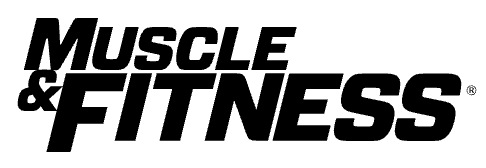5 Factors In Improving Starting Speed
“It ain’t how you start, it’s how you finish.”In life, this parable has been hammered into our collective consciousness with tales of slow starts concluding in sparkling endings. Be it Colonel Sanders franchising KFC’s in his 60’s, or the classic photo of Amazon CEO Jeff Bezos in his spartan “office” in the late 90’s, through grit and perseverance, slower beginnings often transform into unparalleled achievement.

This guy is now worth over 100 billion
Attack ankle and knee strength.
Sure, you squat and lunge and address your lower body when strength training. But have you considered just HOW you squat and lunge? The first couple of steps are largely tied to relative body strength (how strong you are in relationship to your own frame) most namely the strength of your ankles and knees. How can we address this in the weight room? Good question, easy answer, conflicting opinions. Start by bending at the ankle and knee first instead of the hip (hinging) in your squatting/lunging exercises. Here is where it is tricky in the strength training world. It’s possible that you may have been coached in the squat to sit “Back! Back! Back!” Yelled at to push through your heels and been forced into the international brotherhood of “get lower.” All common cues. But, I gotta tell you, that hinging on squats is an incorrect application of what actually happens athletically when we move and accelerate.
If I want to be going forward, why would I be sitting back? If I want to accelerate through my forefoot, why am I pushing through my heels? If strength is specific to the task why would I care to hit ass to grass when I never approach this position on the field or court? Enter someone saying “But Brian, what about the posterior chain?!”
Sure, the posterior chain and glute recruitment and all those trendy buzz words are great, but don’t focus on what is popular and miss out on what is actually true. Yes, you need hindquarter strength like the next athlete (it is tremendously important), but I think there are other exercises out there that can address that better than a squat or conventional lunge.
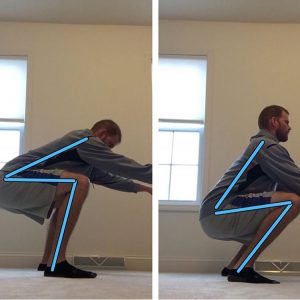
Hip hinge squat on the left, ankle/knee squat on the right
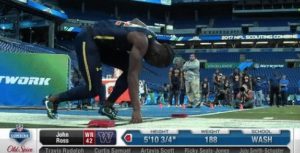
4.22 40 yard dash with tension in the forefoot and knees well over toes.
For starting I want prodigious quad and ankle strength. And in order to start well, your knees have to be over your toes so you can push out horizontally. If you are hinging at the hips for every lower body exercise that simply isn’t happening. Because of this, it will be challenging to actually work and strengthen the ankles and knees. In the start you are initially overcoming inertia and need legitimate ankle and knee strength to put force into the ground. No ankle and knee bend, no big push. The bigger the push, the more distance covered in the step. Two great ways to expedite that are as follows.
Hill Sprints
Want to accelerate more aggressively? Change the grade of your surface and try to bomb up it. Hills are great for a number of reasons. They naturally put your body into a forward position, you are required to push through the earth even more than if you were on a flat surface ( you would fall backwards if you didnt), they reinforce solid foot striking mechanics (almost impossible to heel strike up a hill) and they are just a great opportunity to text your own mental resolve.
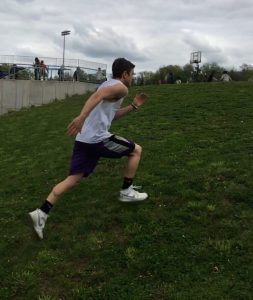
Find one and fly up it
Broad Jump Variations
I have yet to see an athlete that broad jumps under 7 feet run “fast.” You can technique the heck out of a start, but if you don’t have the ability to powerfully push and overcome time and space then you will come up slow in your start. You may have heard the “car analogy” before but it bears repeating here. It doesn’t matter how great a driver (skills, technique, timing) you are, if you have a V4 under the hood and the car next to you has a V12, good night and good luck my friend. Power trumps technique alone. Now power with technique, that can be something special.
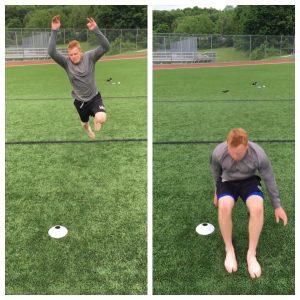
Blast out
Practice starts
So if you have the relative strength and power piece in play, then begin to work at the skill associated with the start itself. There are options abound. Falling starts, partner reactive starts, two point starts, three point starts, sled starts, banded starts, there are a ton of different options you can choose from to hone in on the ability to put your body in the right position, push really hard and get out fast.
Specialized exercises
The banded explosive lunge is a great option for developing the strength in the biomotor pathway that is specific to the start. However, It is a little different that your run of the mill lunge you see at the gym. I have attached a video from Dr. Michael Yessis, the man who has popularized this exercise so you can get a tutorial on how to do this movement.
The winter doldrums are over and the summer is kicking into gear. It’s time to get outside and work on getting faster for the upcoming fall seasons. Jump, bomb up a hill, attack those ankles and knees and practice your technique. Speed kills, a quicker start just kills em faster 😉
